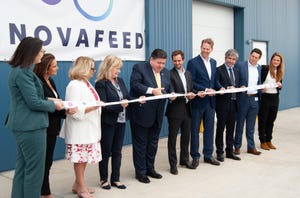Guidance No. 203 intended to help producers develop on-farm procedures and practices to ensure use of safe feed in animal production.
March 8, 2016

The Food & Drug Administration's Center for Veterinary Medicine has released "Guidance for Industry No. 203 Ensuring Safety of Animal Feed Maintained & Fed On-Farm," which is available at www.fda.gov/downloads/AnimalVeterinary/GuidanceComplianceEnforcement/GuidanceforIndustry/UCM438641.pdf.
The guidance is intended to help animal producers develop procedures and practices to ensure the use of safe feed in animal production, FDA said. It applies to all feed offered to farm animals (including all food-producing animals and horses), whether the feed is obtained from commercial suppliers or produced on the farm. It also applies to products consumed by animals during pasture grazing, pre- or post-harvest grazing, free-range feeding and forage crop feeding.
In general, FDA’s guidance documents do not establish legally enforceable responsibilities but, instead, describe the agency’s current thinking on a topic and should be viewed only as recommendations, unless specific regulatory or statutory requirements are cited.
The document outlines basic measures that may be taken to maintain the safety of all types of feed held on the farm for use in animal production. This guidance document recommends establishing measures to ensure the acquisition of safe feed and for maintaining its safety until the feed is offered to animals in the farm environment. This document does not address feed manufacturing, which may also occur on farms, FDA noted.
You May Also Like


.png?width=300&auto=webp&quality=80&disable=upscale)
